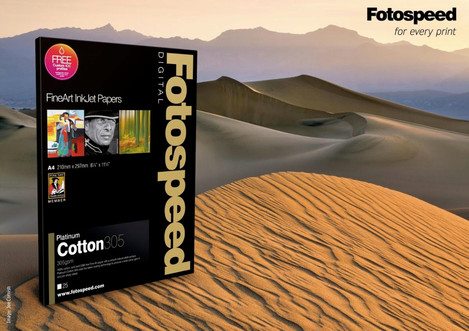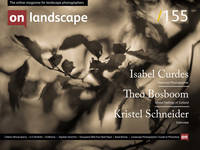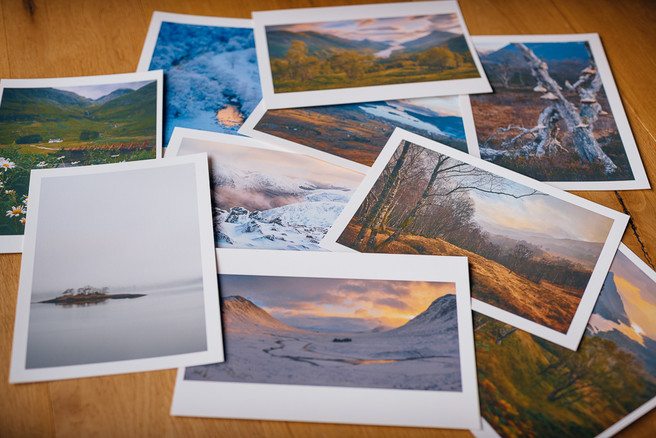Platinum Cotton 305

Tim Parkin
Amateur Photographer who plays with big cameras and film when in between digital photographs.
 For many of you who print your own photos at home, Fotospeed is a familiar name. In the UK they’ve been successful in courting a range of high profile photographers and have convinced most of them (including me) that their products are of a high quality and that they offer good support. The one thing that has been missing from their range so far though is a matt product that is free from optical brightening agents (OBAs). Until now that is.
For many of you who print your own photos at home, Fotospeed is a familiar name. In the UK they’ve been successful in courting a range of high profile photographers and have convinced most of them (including me) that their products are of a high quality and that they offer good support. The one thing that has been missing from their range so far though is a matt product that is free from optical brightening agents (OBAs). Until now that is.
With the help of Joe Cornish (read more ofJoe's articles), an early convert to Fotospeed papers, they have produced Platinum Cotton 305. This paper is similar to Fotospeed Smooth Cotton but with a bit more tooth and a less ‘Persil White’ look. It's also 100% cotton and acid free.
Why do we need a paper without optical brightening agents? Well, in order to explain this we need to know a little bit more about optical brightening agents.
What do OBAs do?
The words ‘optical brightening agents’ seem to suggest something quite benign when more descriptive term for these would be ‘UV powered blue tinting agents’. However, it would be more difficult to market them with this name. How do they work? Well, they use fluorescent dyes that absorb UV light and emit it as blue light. Added to paper, which naturally looks slightly creamy, the mitted blue light cancels out the yellow in the cream to make it closer to a pure white.
So what’s the problem?
If we can make paper appear to be not only white but brighter, what is the problem? There are two main problems.
- OBAs don’t work forever, which wouldn’t be bad as the paper should just revert to a non-OBA colour. However, then OBAs stop working they turn yellow which will also make the lighter tones in your image look yellow.
- The balance of visible light to UV light affects the amount of blue boost so in daylight it might look good but under different types of artificial light the light tones can shift colour.
- It is recommended that frames are glazed with UV blocking glass or acrylic. This obviously cuts the UV available to the OBAs and hence negates their effect.
- The UV output of the spectrophotometers used for profiling papers has a fixed UV content in its light source. This is unlikely to match the UV output of the light under which a print is viewed. This leads to errors in the colour accuracy of the final print.
Because of this, many fine art printers recommend the use of OBA free papers where longevity is important.
Here’s a couple of very good links about the use of OBAs.
An article from Aadenburg, image quality and permanence experts
An article from The Print Guide, an excellent resource on all things print
What about Fotospeeds OBA free paper then?
Well, I’ve printed more than a dozen images on this paper so far and am happy to say it handles and looks very nice indeed. It’s not overtly yellow like some OBA free papers I’ve used in the past and personally I like the slight tooth/texture, even in smaller prints (it certainly helps in the dark areas in my opinion).
I spoke briefly with Joe Cornish about the paper as he has a lot more experience of using it than me and he is very happy with the paper and has already printed one of his own exhibitions using it.
The paper (click here for details on Fotospeed website) is being launched at the Photography Show on the Fotospeed stand F31 and will be available online shortly after. If you visit the stand you can ask Joe more about his experiences using it. He'll be around late Monday afternoon and is giving a talk at 15:30.
(NB Fotospeed Studio Enhance & Fotospeed Platinum Baryta are OBA free gloss papers)


